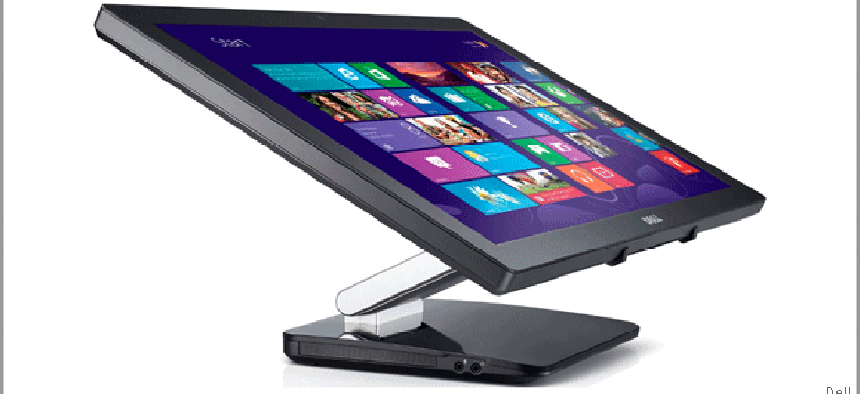Get ready for touch screens on desktop PCs


Connecting state and local government leaders
With the eventual transition to Windows 8 or similar interfaces, touch screen are bound to expand beyond just smart phones and tablets.
Last week the GCN Lab reviewed the NEC V651-TM as both a 65-inch monitor and as a touch screen display. Although such a large monitor would have limited use in a lot of places — most government cubicles couldn’t hold it — the touch screen in general is ready to make a huge comeback on the desktop, although perhaps “comeback” isn’t the right word because it never actually got anywhere to start with.
This is an area covered in my predictions for 2013, but it warrants a spotlight right now, as public-sector agencies should start thinking about adding more of these devices into their budgets sooner rather than later.
Touch screens are interesting because they’re ubiquitous in tablets and smart phones and almost non-existent elsewhere. Putting a touch screen on a desktop computer running Windows XP or even Windows 7 is a bit like giving a fish a jetpack. There’s just not that much that can be done with it.
A few devices did try to add touch screen displays to desktop computers, most notably for all-in-one PCs, but they never really gained any traction. GCN kept one for more than a year as the primary computer for one of the reviewers. At the end of that time, the reviewer said that he honestly had forgotten that the monitor could be used that way.
That lack of respect, or awareness, began to change with the release of Windows 8. Love or hate what Microsoft did making the tablet and desktop interface identical, it will affect all users very soon, if it hasn’t already. Users trying to use a desktop PC running Windows 8 will want to touch the screen. Those big program icons are made to be touched. Menus are designed to be expanded and contracted using hand gestures. The key to the efficiency and speed of Windows 8 is the touch screen interface. It will work with keyboard shortcuts and mouse clicks, but it’s like riding a bicycle to work instead of driving or taking the train.
If the growth of tablets turns out to be a plus for desktop PCs, users will demand more touch screens. What will all those new desktops be running on? I’ll give you a hint: it comes after seven.
It won’t happen overnight, but as agencies eventually move on from their XP or Windows 7 systems, touch screen interfaces are going to come into play.
Thankfully, adding a touch screen to a desktop system is easy. Simply connect the video display to your port of choice — VGA, DVI, HDMI, DisplayPort or whatever. Then plug the USB cable into the desktop to make the LCD an input device. It’s also quite inexpensive, not adding much to the cost of an LCD monitor, whose prices have already bottomed out.
The winds of change are blowing and a product that nobody once wanted will soon be one of the most popular. If you’re a government IT purchaser, do your staff a favor and start buying them before the rush.
NEXT STORY: Video-wall display cubes leverage LEDs




